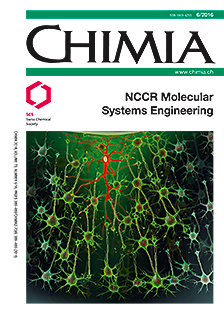Compartmentalization – A Prerequisite for Maintaining and Changing an Identity
DOI:
https://doi.org/10.2533/chimia.2016.428Keywords:
Compartmentalization, Enzyme engineering, High-throughput screening, Microfluidics, Water-in-oil emulsionAbstract
The chemical manipulation of DNA is much more convenient than the manipulation of the bioproducts, such as enzymes, that it encodes. The optimization of bioproducts requires cycles of diversification of DNA followed by read-out of the information into the bioproduct. Maintaining the link between the information – the genotype – and the properties of the bioproduct – the phenotype – through some form of compartmentalization is therefore an essential aspect in directed evolution. While the ideal compartment is a biological cell, many projects involving more radical changes in the bioproduct, such as the introduction of novel cofactors, may not be suitable for expression of the information in cells, and alternative in vitro methods have to be applied. Consequently, the possibility to produce simple and advanced micro compartments at high rates and to combine them with the ability to translate the information into proteins represents a unique opportunity to explore demanding enzyme engineering projects that require the evaluation of at least hundreds of thousands of enzyme variants over multiple generations.Downloads
Published
2016-06-29
Issue
Section
Scientific Articles
License
Copyright (c) 2016 Swiss Chemical Society

This work is licensed under a Creative Commons Attribution-NonCommercial 4.0 International License.
How to Cite
[1]
Chimia 2016, 70, 428, DOI: 10.2533/chimia.2016.428.







